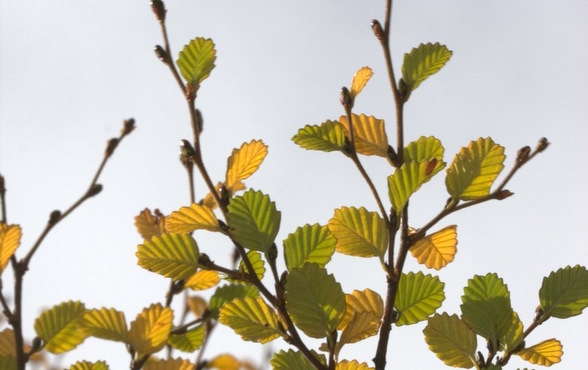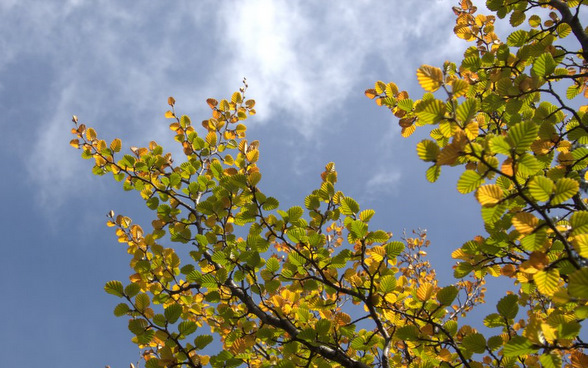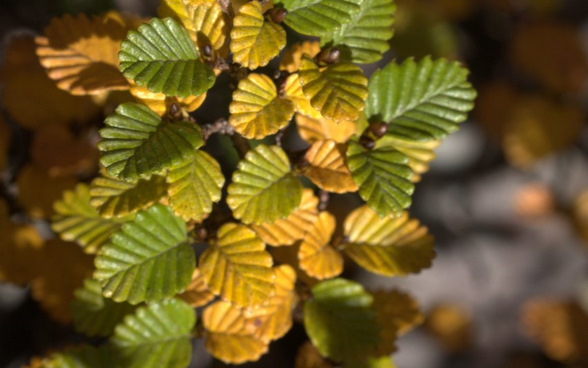Often called Deciduous Beech, it is Australia’s only cold-deciduous woody plant. The wiry tangled growth of its branches give it another common name, Tanglefoot.
A dense shrub. Usually 1 - 3 m tall and wide, with spreading branches. It sometimes grows as a small tree in rainforest. Bark smooth and grey.
Leaves
Arranged alternately along stems, on short stalks. Individual leaves are rounded in outline with lobed margins; distinct grooves follow the leaf veins making the veins prominent on the lower side. Leaves are 10 - 20 mm long, bright to mid-green, paler on the under surface, turning yellow then orange or red in autumn. Leaves are absent during Winter. New leaves unfold from buds in a concertina fashion in spring.
Flowers
Separate male and female flowers, small and inconspicuous, and appear in late summer and early autumn.
Fruits/Seeds
A small woody capsule around 8 mm long, splitting open into 4 lobes. Large quantities of seed are produced during infrequent ‘mast’ years, with much less seed in regular years.
Field Guide
Improve your identification skills. Download your Fagus field guide here!





